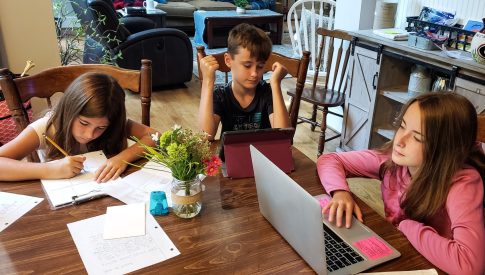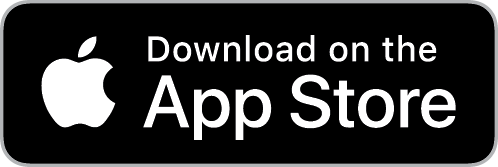Physics - Broad general education (BGE) level 3/4 Index
Online Lessons for Students in Scotland learning broad general education Physics
- Energy Sources and Sustainability
- Space
- Forces
- Electricity
- Vibrations and Waves
Planet Earth: this session talks about the varied features of our Planet Earth, the sources of energy, states of matter and more.
Energy Sources and Sustainability: there are two types of energy: renewable and non-renewable. Non-renewable energy includes coal, gas and oil.They are made by burning fossil fuels to create energy. Renewable energy includes solar, hydro and wind energy.
Conduction: the transfer of internal energy by microscopic collisions of particles and movement of electrons within a body. The colliding particles, which include molecules, atoms and electrons, transfer disorganised microscopic kinetic and potential energy.
Convection: single or multiphase fluid flow that occurs spontaneously due to the combined effects of material property heterogeneity and body forces on a fluid, most commonly density and gravity.
Level 3 – Radiation: in physics, radiation is the emission or transmission of energy in the form of waves or particles through space or through a material medium.
Space: a term that can refer to various phenomena in science, mathematics, and communications. In astronomy and cosmology, space is the vast 3-dimensional region that begins where the Earth’s atmosphere ends
Level 3 – The solar system: our solar system consists of our star, the Sun, and everything bound to it by gravity – the planets Mercury, Venus, Earth, Mars, Jupiter, Saturn, Uranus, and Neptune; dwarf planets such as Pluto; dozens of moons; and millions of asteroids, comets, and meteoroids.
Level 3 – Life on other planets: this lesson looks at recent developments in the search for habitable planets and opens up the topic of the possibility of life on other planets.
Level 4 – The origin of the universe: this lesson introduces students to the history of our Universe.
Forces, electricity and waves: this lesson explains Forces – friction, gravity & weight. Electricity – series & parallel circuits. Waves – light waves & electromagnetic spectrum.
Forces: a force is an influence that can change the motion of an object. A force can cause an object with mass to change its velocity, i.e., to accelerate. Force can also be described intuitively as a push or a pull. A force has both magnitude and direction, making it a vector quantity.
Level 3 – Forces: a force is an influence that can change the motion of an object. A force can cause an object with mass to change its velocity, i.e., to accelerate. Force can also be described intuitively as a push or a pull. A force has both magnitude and direction, making it a vector quantity.
Level 4 – Speed: the rate at which someone or something moves or operates or is able to move or operate.
Level 4 – acceleration: the rate of change of the velocity of an object with respect to time. Accelerations are vector quantities. The orientation of an object’s acceleration is given by the orientation of the net force acting on that object.
Level 4 – Speed-time graphs: speed-time graphs are very useful when describing the movement of an object. This is a velocity time graph of an object moving in a straight line due north. The displacement of this object is the area of the velocity time graph. A sloping line on a speed-time graph represents an acceleration.
Level 4 – Newton’s 1st Law: Newton’s first law of motion states that there must be a cause—which is a net external force—for there to be any change in velocity, either a change in magnitude or direction.
Level 4 – Newton’s 2nd Law: Newton’s second law of motion pertains to the behaviour of objects for which all existing forces are not balanced. The second law states that the acceleration of an object is dependent upon two variables – the net force acting upon the object and the mass of the object.
Level 3 – weight: the force with which a body is attracted to Earth or another celestial body and which is equal to the product of the object’s mass and the acceleration of gravity.
Level 4 – magnets: a magnet is a material or object that produces a magnetic field. This magnetic field is invisible but is responsible for the most notable property of a magnet: a force that pulls on other ferromagnetic materials, such as iron, steel, nickel, cobalt, etc. and attracts or repels other magnets.
Level 4 – density: the density, of a substance is its mass per unit volume. The symbol most often used for density is ρ, although the Latin letter D can also be used.
Electricity: the set of physical phenomena associated with the presence and motion of matter that has a property of electric charge.
Level 3 – Series and parallel circuits: there are two types of circuit we can make, called series and parallel. The components in a circuit are joined by wires. If there are no branches then it’s a series circuit. If there are branches it’s a parallel circuit.
Level 3 – Current in series and parallel circuits: the current in a parallel circuit splits into different branches then combines again before it goes back into the supply. The current in a series circuit is the same at all places in the circuit.
Level 3 – Voltage in series and parallel: voltage across components in a series circuit. The supply voltage is shared between components in a series circuit. The sum of the voltages across components in series is equal to the voltage of the supply. The voltage across components in parallel is the same for each component.
Level 4 – Current, Voltage and Resistance: the relationship between current, voltage and resistance is expressed by Ohm’s Law. This states that the current flowing in a circuit is directly proportional to the applied voltage and inversely proportional to the resistance of the circuit, provided the temperature remains constant.
Level 4 – Input and Output Devices: an input device responds to changes in the environment and produces a suitable electrical signal for processing in an electronic circuit. In all input devices, other forms of energy are transformed into electrical energy. Output devices in electronic systems transform electrical energy into another type of energy, such as light, sound or kinetic energy.
Level 4 – Logic Gates & Practical Circuits: A logic gate is an idealised model of computation or physical electronic device implementing a Boolean function, a logical operation performed on one or more binary inputs that produces a single binary output.
Vibrations and waves: for a vibration to occur an object must repeat a movement during a time interval. A wave is a disturbance that extends from one place to another through space.
Level 4 – Waves: in physics, mathematics, and related fields, a wave is a propagating dynamic disturbance of one or more quantities, sometimes as described by a wave equation. In physical waves, at least two field quantities in the wave medium are involved.
Level 4; Sound waves: acoustic waves are a type of energy propagation through a medium by means of adiabatic compression and decompression.
Level 3 – Refraction of light: in physics, refraction is the change in direction of a wave passing from one medium to another or from a gradual change in the medium. Refraction of light is the most commonly observed phenomenon.
Level 3 – Lenses: a lens is a transmissive optical device which focuses or disperses a light beam by means of refraction.
Level 3 – The Visible Spectrum: The visible spectrum or optical spectrum is the portion of the electromagnetic spectrum that is visible to the human eye. Electromagnetic radiation in this range of wavelengths is called visible light or simply light.
Level 3 – The Electromagnetic Spectrum: the range of frequencies of electromagnetic radiation and their respective wavelengths and photon energies.
Level 4 – The Electromagnetic Spectrum: the range of frequencies of electromagnetic radiation and their respective wavelengths and photon energies.


"It's bright and colourful, easy to read, and extremely easy to use unlike most textbooks or online learning websites" Daisy, S3 PupilSign Up & Learn Today

